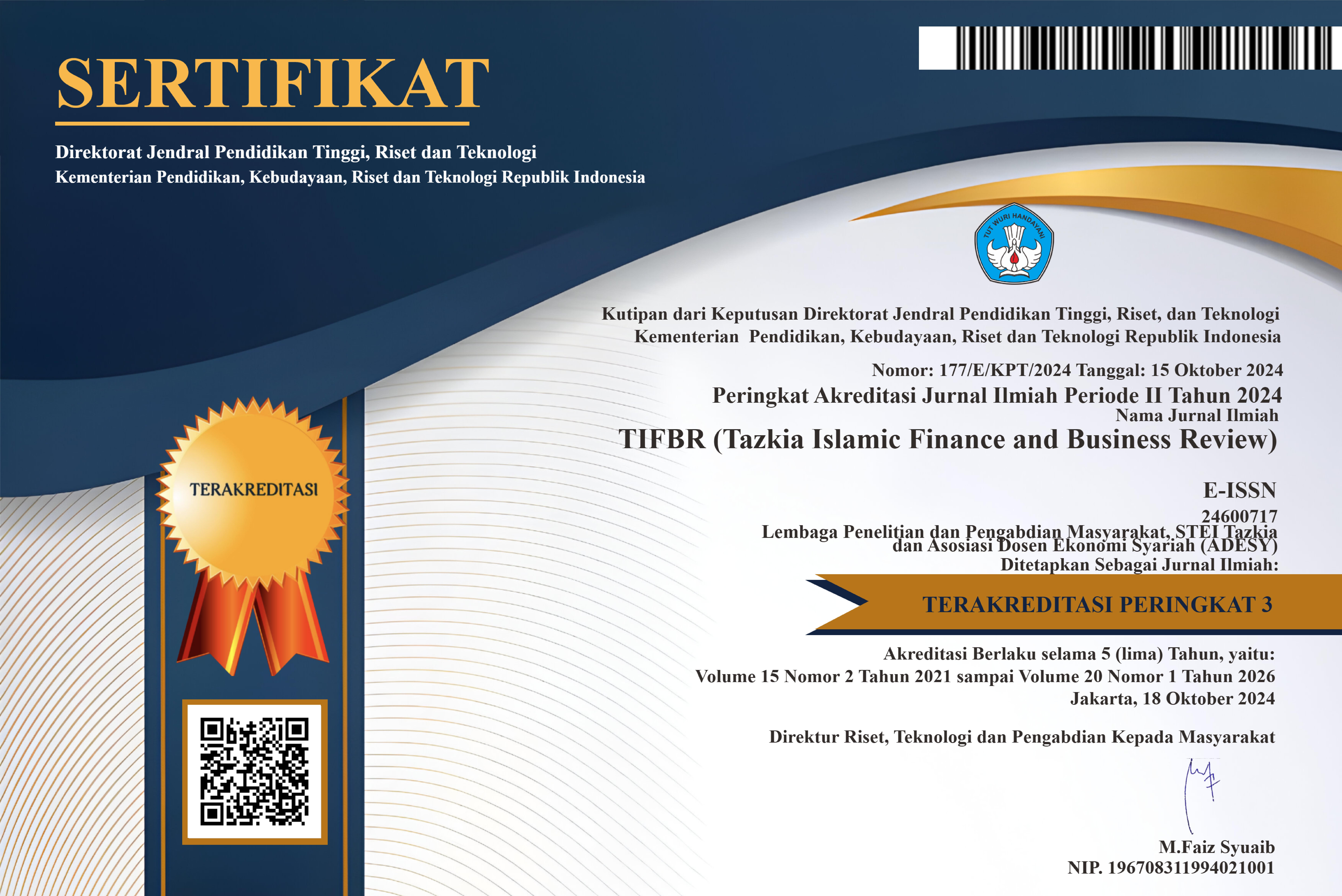POSITIONING ANALYSIS OF ISLAMIC BANK vis-àvis CONVENTIONAL BANK IN INDONESIA USING PARAMETRIC SFA AND DFA METHODS15
DOI:
https://doi.org/10.30993/tifbr.v4i2.36Abstract
This study will measure and compare the efficiency of Conventional and Islamic banks in Indonesia using parametric approach stochastic frontier approach (SFA) and distribution free approach (DFA). These measurements will provide comprehensive and robust results of efficiency of individual bank compare to its peer group. The results using parametric SFA show that in 2002, conventional banks (0.79) were slightly more efficient than Islamic banks (0.77), while in 2003, the efficiency of Islamic banks improved to 0.84 and the efficiency of conventional banks worsen to 0.76, so that Islamic banks have become more efficient than conventional banks. Conventional and Islamic banks have been improving and converged to the highest level of efficiency (1.00) since 2004. The DFA results show that conventional banks (0.89) are only slightly more efficient than Islamic banks (0.87). Conventional public bank (0.93) is the most efficient, while Islamic regional bank (0.84) is the least efficient. Moreover, efficient banks (conventional and Islamic) do not always have lower OCOI (operating costs divided by operating income), while banks with better OCOI usually are more profitable (have better return on assets or ROA). Therefore, technically, Islamic banks have shown their readiness to compete head to head with their conventional counterparts. However, other aspects, such as, number of networks and branches, service quality, convenience, products and services provided, human resources, and pricing, should have become the next priorities for improvements.
JEL Classification : C10, C33, G21, G28
Keywords : Islamic Banking, Efficiency, Stochastic Frontier Approach, Distribution Free Approach
Downloads
Published
How to Cite
Issue
Section
License

Tazkia Islamic Finance and Business Review (TIFBR) is licensed under a Creative Commons Attribution-NonCommercial 4.0 International License.
Authors who publish with this journal agree to the following terms:
- Authors retain copyright and grant the journal right of first publication with the work simultaneously licensed under a Creative Commons Attribution License that allows others to share the work with an acknowledgment of the work's authorship and initial publication in this journal.
- Authors are able to enter into separate, additional contractual arrangements for the non-exclusive distribution of the journal's published version of the work (e.g., post it to an institutional repository or publish it in a book), with an acknowledgment of its initial publication in this journal.
- Authors are permitted and encouraged to post their work online (e.g., in institutional repositories or on their website), as it can lead to productive exchanges, as well as earlier and greater citation of published work (See the Effect of Open Access).

















